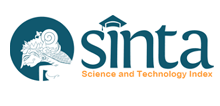Keywords
marine coastal; preservation; social capital
Document Type
Article
Abstract
This study aimed to reveal the background of coastal communities in North Bali to develop texts on preserving coastal and marine resources. It also explored the various forms of social capital that are instrumental in the preservation of these resources, the process of dissemination of preservation texts, the social control mechanisms that maintain the stability of social capital and the preservation of beaches and seas, and the profound meaning of the social capital text it develops. This study used a qualitative approach. It revealed that coastal communities developed coastal and marine resource preservation texts driven by an awareness of the coast and sea as living spaces. The forms of social capital it develops are expressions, stories/myths, agreements, and social groups. The existence of social capital for coastal communities is not just a concept but a powerful force that functions in the preservation of coastal and marine resources. The text socialisation process involves family, dadia, banjar, organisations, and educational institutions. The mechanism of social control developed is from below and above, in an abstract sense, by involving various institutions. Developed social capital is meaningful for the harmonious relationship between humans and nature, humans with humans, humans with God, and the sustainability of the lives of coastal communities in North Bali.
First Page
169
Last Page
174
Page Range
169-174
Issue
1
Volume
20
Digital Object Identifier (DOI)
10.21831/jc.v21i1.66705
DOI Link
: https://doi.org/10.21831/jc.v21i1.66705
Recommended Citation
Mudana, I. W. (2024). Citizenship education in building social capital for marine and coastal conservation. Jurnal Civics: Media Kajian Kewarganegaraan, 21(1), 169-174. https://doi.org/10.21831/jc.v21i1.66705
References
Alam, M. N., Ogiemwonyi, O., Hago, I. E., Azizan, N. A., Hashim, F., & Hossain, M. S. (2023). Understanding consumer environmental ethics and the willingness to use green products. Sage Open, 13(1), 21582440221149727. https://doi.org/10.1177/21582440221149727
Amini, S., Johan, S., Pour, E. K., & Mohamed, A. (2023). Employee welfare, social capital, and IPO firm survival. Entrepreneurship Theory and Practice, 47(6), 2174-2204. https://doi.org/10.1177/10422587221120821
Atmadja, N. B. (2006). Bali pada era globalisasi. IKIP N Singaraja.
Atmadja, N. B., Atmadja, A. T., & Maryati, T. (2017). Bali pulau banten: perspektif sosiologi komodifikasi agama. Pustaka Larasan.
Badaruddin (2005). Modal sosial (sosial capital) dan pemberdayaan komunitas nelayan, dalam isu-isu kelautan dari kemiskinan hingga bajak laut. Pustaka Pelajar.
Barker. (2005). Cultural studies, teori dan praktik. Bentang
Baudrillard, J. (2000). Berahi. Bentang.
Coleman, J. S. (2011). Dasar-dasar teori sosial. Nusa Media.
Colletta, N. J., & Kayam, U. (1987). Kebudayaan dan pembangunan: sebuah pendekatan terhadap antropologi terapan di Indonesia. Yayasan Obor Indonesia.
Dewantara, B. J., & Aman, A. (2023). Implementation of nationalism value in Ubrug based learning. Jurnal Civics: Media Kajian Kewarganegaraan, 20(2), 292-301. https://doi.org/10.21831/jc.v20i2.63887
Dove, M. R. (1985). Peranan kebudayaan tradisional Indonesia dalam modernisasi. Yayasan Obor Indonesia.
Eiseman, F. B. (1988). Bali Sekala and Niskala. Periplus Editions.
Fukuyama, F. (2005). Guncangan besar kodrat manusia dan tata sosial baru. Gramedia Pustaka Utama.
Hao, F., Michaels, J. L., & Bell, S. E. (2019). Social capital’s influence on environmental concern in China: An analysis of the 2010 Chinese general social survey. Sociological Perspectives, 62(6), 844-864. https://doi.org/10.1177/0731121419835504
Hasbullah, J. (2006). Sosial capital, menuju keunggulan budaya manusia Indonesia. MR-United Press.
Ibrahim,I. S. (1997). Ectasy gaya hidup. Mizan.
Kleden, I. (2006). Cultural studies dan masalah kebudayaan di Indonesia. Universitas Udayana.
Korten, D. C. (l993). Menuju abad ke 21: tindakan sukarela dan agenda global. Sinar Harapan.
Liu, M., & Feng, Q. (2021). Does social capital promote garbage classification? evidence from China. Sage Open, 11(3). https://doi.org/10.1177/21582440211040781
Mak, H. W., Gallou, E., & Fancourt, D. (2024). Is social capital higher in areas with a higher density of historic assets? Analyses of 11,112 adults living in England. Perspectives in Public Health, 144(4), 251-262. https://doi.org/10.1177/17579139221145609
Mudana, I. W. (2013). Ideologi nyegara gunung: Sebuah kajian sosiokultural kemiskinan pada masyarakat pesisir di Bali Utara. Jurnal Ilmu Sosial dan Humaniora, 2(1). 138-149. https://doi.org/10.23887/jish-undiksha.v2i1.1290
Mudana, I. W. (2014). Kolaborasi masyarakat sipil, politik dan ekonomi dalam pemanfaatan modal sosial (Kasus pelestarian lingkungan pesisir pada masyarakat Bali Aga-Desa Les Bali Utara). Bumi Lestari, 13(2), 422-429.
Mudana, I. W. (2015). Pemberantasan kemiskinan melalui pendekatan sosiokultural pada masyarakat pesisir di bali utara. Jurnal Candra Sangkal, 5(13).
Muringani, J., Fitjar, R. D., & Rodríguez-Pose, A. (2021). Social capital and economic growth in the regions of Europe. Environment and Planning A: Economy and Space, 53(6), 1412-1434. https://doi.org/10.1177/0308518X211000059
Perez Fernandez, H., Rodriguez Escudero, A. I., Martin Cruz, N., & Delgado Garcia, J. B. (2021). The impact of social capital on entrepreneurial intention and its antecedents: Differences between social capital online and offline. BRQ Business Research Quarterly, 23409444211062228. https://doi.org/10.1177/23409444211062228
Pineda Pinto, M. (2020). Environmental ethics in the perception of urban planners: A case study of four city councils. Urban Studies, 57(14), 2850-2867. https://doi.org/10.1177/0042098019887932
Poerwanto, H. (2000). Kebudayaan dan lingkungan. Pustaka Pelajar.
Reuter, T. A. (2005). Custodians of the sacred mountains/Budaya dan masyarakat di pegunungan Bali. Yayasan Obor Indonesia.
Yuntoro, E. S. (2004). Modal sosial, desentralisasi dan demokrasi lokal. Jurnal Analisis CSIS, 33(3).



